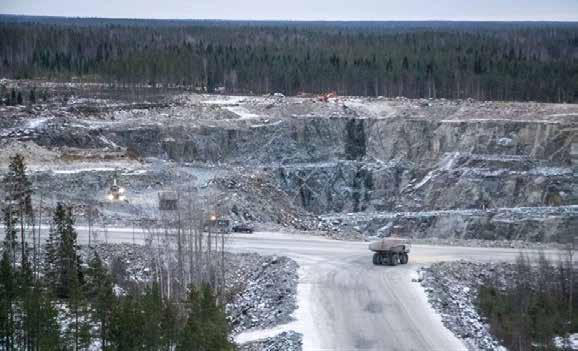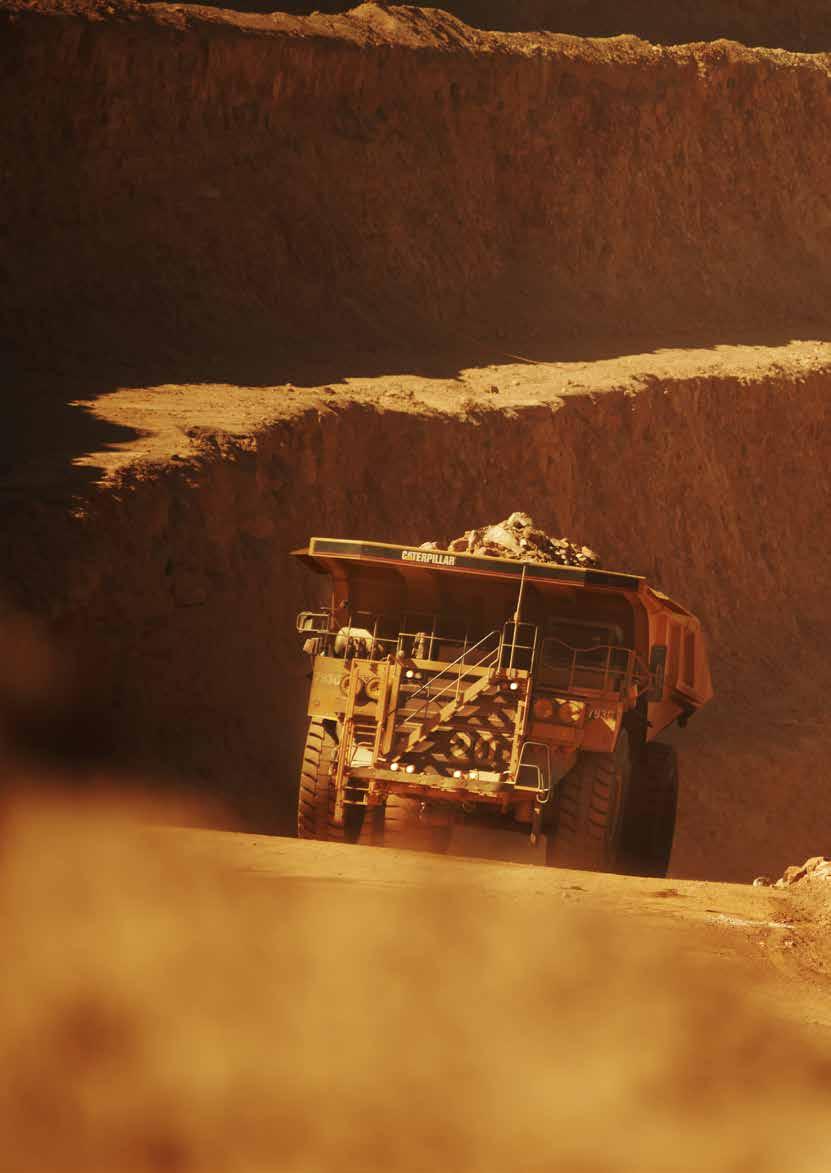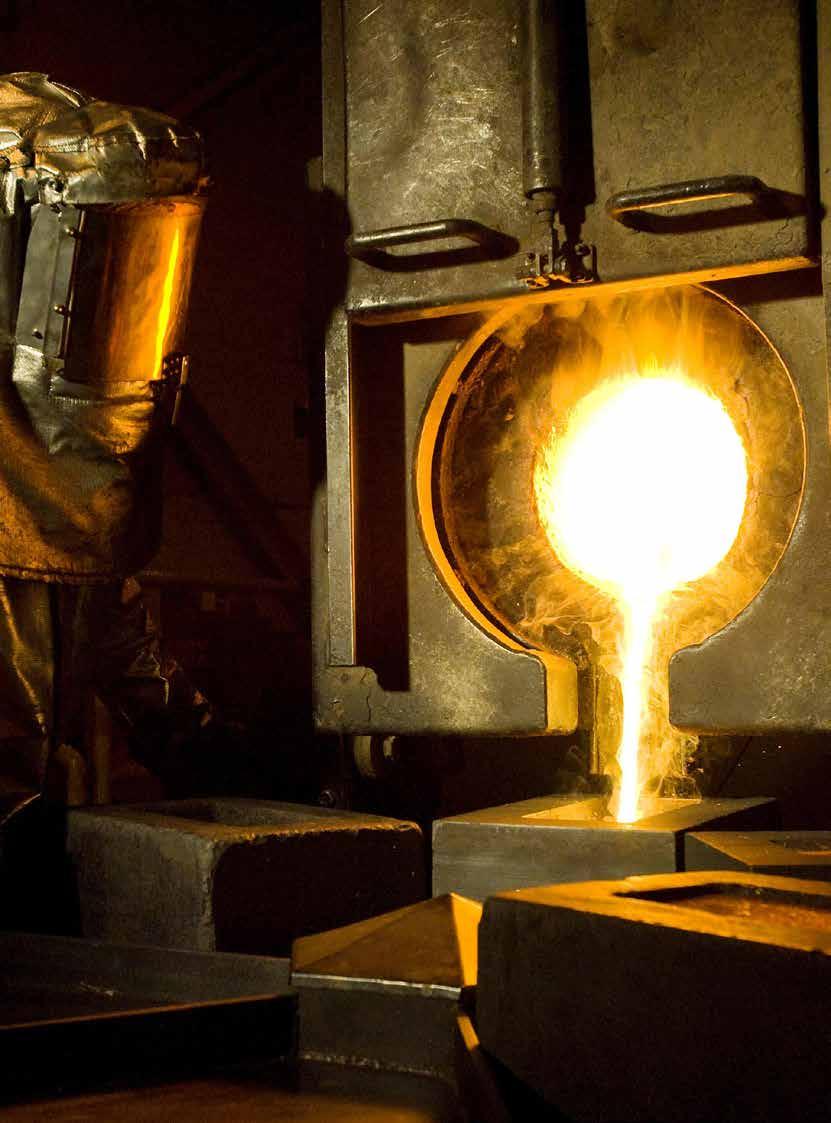
5 minute read
Brain drain in the mineral sector spells trouble for critical industries

With a growing demand for critical minerals, the mining industry is looking for solutions to access additional resources with a limited workforce
Advertisement
By Greg Rankin
The ‘metals of the future’ are deeply reliant on a robust mining sector. Everything from space travel and transportation, to electronics and power storage, even communications and medical applications rely on critical minerals such as aluminum, platinum, lithium, as well as gold, silver and copper. There is a major roadblock ahead, however - a lack of talent needed to drive the industry forward.
“We’re tapped out at this moment in time,” says William Sattlegger, P. Geo, a geoscientist with more than 35 years in the resource industry and the Executive Director of the Redefining Electrical Metals Conference. “What I’ve seen over the last several years is a deficiency of talent. We just don’t have enough experienced people: technical staff, service providers, operational services, equipment, labour, period.”
Unfortunately, he says, the problem is getting worse. In his opinion, it starts at the academic level where there are simply not enough university students seeking a career in the mineral sector.
This comes on the heels of a report by the US Bureau of Labor and Statistics that says the industry will need to increase its workforce by at least 4% over the next decade.
Critical minerals
There are far-reaching implications if the dearth of talent persists. In 2018, a number of governments began compiling lists of minerals that were considered critical for economic and
national security. These lists varied slightly by locale, but typically included dozens of minerals such as lithium, platinum group metals and aluminum. While many governments are working to increase domestic mining of these minerals, it becomes much more difficult if people are not entering the industry at a sustainable rate. “It is ironic that you have all these highly talented young people going into the tech industry, aerospace, electric vehicles, but without these critical metals, they won’t be able to produce that technology,” adds Sattlegger.
Mining for options
There are a number of solutions that the industry could focus on to help align itself with the imminent shortfall in talent. As an example, instead of committing large investments into the exploration of new properties, the mining industry needs to shift to extracting the resources that were previously left behind in known deposits because at the time they were simply not economical. “Historically, when miners found something, they would only be able to pull about 60% of the precious metal out of the ground,” explains Sattlegger. “Thankfully, with today’s technology, we should be getting 90% recovery or more, utilizing extraction processes which are less detrimental to the environment.” Additionally, mining operations
news feature

should be developing more than just the most valuable or primary commodities within a known deposit. Since these key minerals occur together naturally, mining operations should be extracting not just the gold and silver, but all the associated minerals which are technically feasible. By focusing on underdeveloped properties, companies can also dramatically reduce the time it takes to get from the exploration phase to production. “We are seeing this business model work more and more,” says Sattlegger. “It is easier to finance and becomes more attractive for investors.” He believes that junior mining operations are better positioned to take advantage of these opportunities, however.
A better mousetrap
Element79 Gold Corp (CSE: ELEM, FST: 7YS), a junior mining company with a growing list of properties globally, is a prime example of this strategy. The company’s mission is to take its acquisitions and develop them using state-of-the-art technology. The intent of its business model is to turn those assets into proven resource values and then cashflow-positive operations in under two years. “We have the flexibility to be nimble, acquire multiple properties, and at the same time take advantage of the latest and greatest technologies,” says James Tworek, CEO of Element79. “While we obviously work with great contractors, we don’t necessarily need a massive workforce under our wing.” While mining traditionally depends on tested-and-true methodologies and technologies, Element79 is not against breaking the mould when it comes to the utilization of bleeding-edge technologies. This could include the use of AI systems to analyze geological and geophysical data from existing drillholes and regional analogs. Additionally, the company may look to incorporate everything from satellitebased geophysics to high-resolution imaging of in-ground resources. Both AI and satellite geophysical technologies utilize supercomputers to crunch and render data for improved results when setting new targets for future drill plans. Element79 has also recently deployed drone-based magnetic resonance to generate higher quality hits on properties instead of helicopter recon. “Old technologies often require a dozen or more workers onsite to operate,” adds Tworek. “A major benefit of new tech is that in some cases you can get equal, if not far better, results with fewer humans. So, if people are becoming scarce in this industry across North America, then that is a good thing.” Technological advances can also improve the recovery of resources on the backend as well. “What was previously uneconomical for miners in the past can become profitable to more innovative miners today, with smaller teams, harnessing newer technology and equipment,” explains Tworek. “With the global population growing along with developing economies, there will always be more demand for resources.”
Author: Greg Rankin is a Houston-based freelance writer with more than 20 years’ experience writing for the energy, mining and resource industries.
The world leader for compressor solutions for mining applications




4,000 CFM / 115 m3/min High flow with high performance #1 in reliabilty and durability 500 PSI / 35 BAR For when you need high pressure

Ingersoll Rand has served the mining industry for over 150 years. Our OEM brands include Ingersoll Rand, GHH RAND and Tamrotor, making us the global leading manufacturer of the screw airends and compressor packages. Whether you manufacture drill rigs or have an aftermarket need, lean on us to make your life better.
www.oem-solutions.ingersollrand.com
Part of the Ingersoll Rand family
Adding the Tamrotor offering of airends and compact compressor packages perfectly complements the Ingersoll Rand and GHH RAND brands, giving us the most complete OEM offering - whatever your application is, we have the solution.
Oil injected single stage air ends Enduro Series Integrated air ends Tempest Series Compact compressor packages for mobile applications CT Series










